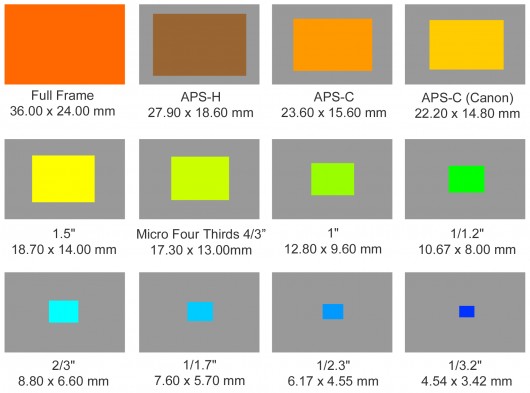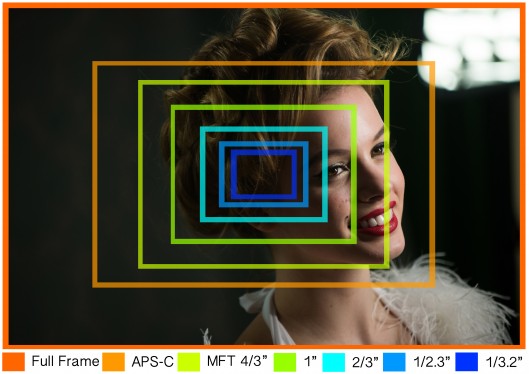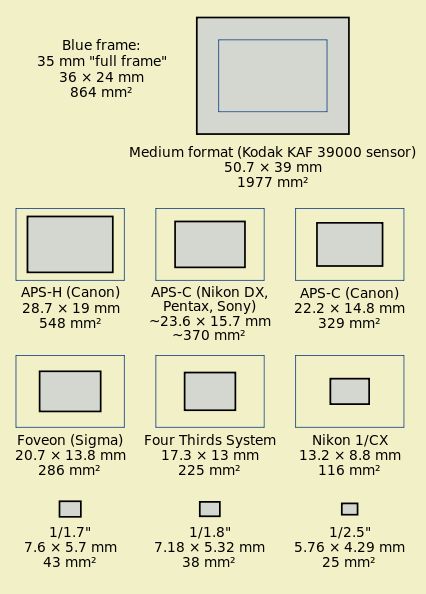Sensor size in point and shoots?
Jun 1, 2014 19:40:49 #
n3eg wrote:
FF is full frame, APS/DX is half frame, and 4/3 is quarter frame. Or you could call four thirds 1/0.75 if it makes Racmanaz feel better...either way, I call 1/2.3 tiny.
Not so confusing until you realize that by the same rule 4/3 would be 1 1/3 frame.
Jun 1, 2014 21:58:48 #
amehta
Loc: Boston
Racmanaz wrote:
I am having trouble understanding what exactly is the what 1/2.3" CMOS is??? How do you interpret that number fraction? is it a 1/2 inch plus .3 inches??? what is it and why don't they use the metric system for sensor sizes as they do with other camera measurements???
It makes a lot of sense to ask, in this case to realize that it is archaic and no particularly useful. You can't decide that without some information. :-)
Jun 1, 2014 22:00:35 #
amehta
Loc: Boston
oldtigger wrote:
divide 1 by 2.3?
my favorites are 1/2 frame, 1/2 frame of what and four thirds. Again, 4 thirds of what and what is the other dimension?
my favorites are 1/2 frame, 1/2 frame of what and four thirds. Again, 4 thirds of what and what is the other dimension?
While we call it four thirds, it is really 4/3 to represent the aspect ratio 4x3, which is different than DSLRs which are generally 3x2.
Jun 1, 2014 23:55:51 #
oldtigger wrote:
divide 1 by 2.3?
my favorites are 1/2 frame, 1/2 frame of what and four thirds. Again, 4 thirds of what and what is the other dimension?
my favorites are 1/2 frame, 1/2 frame of what and four thirds. Again, 4 thirds of what and what is the other dimension?
Half-frame historically refers to ½ the size of a 35mm frame, cut vertically and is therefore 18mm X 24mm with a diagonal of 30mm. 4/3 is the size of the circle created by a 4/3" video tube, and has no relation except for the somewhat questionable decision to match the aspect ratio to the number. The size of a 4/3 sensor is 13.5mm X 18mm, with a diagonal of 22.5mm and a crop factor of 1.92. HOWEVER, since it is common practice to have the sensor slightly larger than the image circle, the 4/3 image is 13mm X 17.3mm, with a diagonal of 21.64mm and a crop factor of 2.0 (how convenient!). Since sensor sizes are (or at least were) based on comparison to vacuum tubes, the sizes you calculate (1/1.5 = .667) are, for the most part meaningless. The only way to be sure is to ignore the designation of the sensor and use the tables referenced earlier or go back to the Pythagorean theorem to calculate the diagonal (and thus the diameter) of the actual image circle.
To take this concept one step further, the sensor size may be irrelevant! If you have a camera with a full frame (24mm X 36mm), and your image is 13mm X 17mm, you will only use an image circle with a diameter of 21.4mm on that huge sensor (43.27mm diameter). This may be a waste unless you are able to vary the angle of the axis of the light beam as it relates to the plane of the sensor (and, hopefully, to be able to correct for distortion).
"Is a puzzlement"
Jun 2, 2014 01:43:21 #
Mogul wrote:
Half-frame historically refers to ½ the size of a ... (show quote)
The names of sensors are archaic and meaningless. Dimensions will tell you the real facts. And new photographers are baffled by f-stops? Sensor nomenclature would make any head spin. Don't try to make sense of it, it has no practical use.
Jun 2, 2014 01:57:07 #
wlgoode wrote:
The names of sensors are archaic and meaningless. Dimensions will tell you the real facts. And new photographers are baffled by f-stops? Sensor nomenclature would make any head spin. Don't try to make sense of it, it has no practical use.
In most cases, this is true. It only means something in the few cases in which the sensor is identical or nearly identical to a previously or currently used film size. That's one of the reasons I said, "the sensor size may be irrelevant!"
Jun 2, 2014 02:32:00 #
Mogul wrote:
In most cases, this is true. It only means something in the few cases in which the sensor is identical or nearly identical to a previously or currently used film size. That's one of the reasons I said, "the sensor size may be irrelevant!"
To us old film guys, yeah. Many new photographers have digital as their first camera. I think a new nomenclature for sensor sizes would be helpful.
For instance APS-C? Huh? Not even standard, Canon's is smaller!
Jun 2, 2014 07:26:32 #
Racmanaz wrote:
I am having trouble understanding what exactly is the what 1/2.3" CMOS is??? How do you interpret that number fraction? is it a 1/2 inch plus .3 inches??? what is it and why don't they use the metric system for sensor sizes as they do with other camera measurements???
I have been saying for months that camera companies need help with their naming process. Everyone knows the size of 35mm. We also know what 120 film looks like. When it gets to 4/3, 1/2.3, and 1" that isn't really 1", the terms become meaningless.
Below is a comparison of sensor sizes.



Jun 2, 2014 09:11:03 #
I go to the local camera store and look at the display comparing the sizes of sensors. Makers have come up with sensors which do more with the light than older sensors of the same size- ccd vs cmos sensors also increasing iso ability-I think. But in the case of 1 2/3 sensors as the n1 or j1 they get really great shots-good processors! For every positive there seems to be a negative , however. I still enjoy my older d200 slr and s90 canon compact because I like the ccd sensor color and look-it seems very much like film to me. Sony seems to make most of the newer sensors but each makers processor makes major differences in the look of the product-especially before final editing.
Jun 2, 2014 09:39:34 #
amehta wrote:
While we call it four thirds, it is really 4/3 to represent the aspect ratio 4x3, which is different than DSLRs which are generally 3x2.
:thumbup: :thumbup:
Jun 2, 2014 10:31:23 #
My head is spinning. TMI. Seriously though, thanks to jerryc41 for posting the most helpful reply to those of us that didn't do so well in math class.
Jun 2, 2014 12:38:34 #
I have to rate this in the top 10 of Threads with the most Useless Information...lol.
Jun 2, 2014 13:10:36 #
Racmanaz
Loc: Sunny Tucson!
mfeveland wrote:
I have to rate this in the top 10 of Threads with the most Useless Information...lol.
Lol and I have yet to get the answer I need.
Jun 2, 2014 13:15:59 #
The confusing terminology of digital photograph is meant to confuse the buyer in getting something that he/she knows nothing about. You open the package at home and then discover that the purchase is not what you expected, so you go out and buy something else. This helps sales immensely. Welcome to the world of digital photography!
Jun 2, 2014 13:17:10 #
If you want to reply, then register here. Registration is free and your account is created instantly, so you can post right away.





